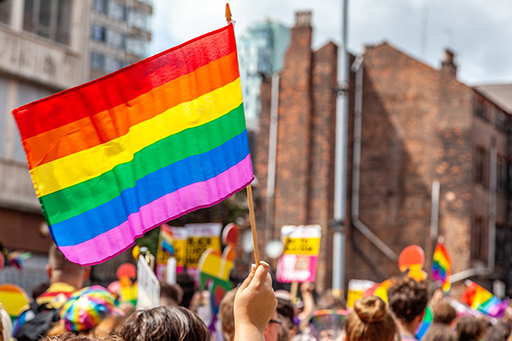4 Sexual orientation
Psychology Today (no date) explains that ‘sexual orientation describes patterns of sexual, romantic, and emotional attraction, and one’s sense of identity based on those attractions. Sexual orientation is distinct from gender identity, the internal sense of being male, female, or non-binary.’
Exploring discrimination
New research from Stonewall (2025) reports the following key findings:
- 39 per cent of LGBTQ+ employees still feel the need to hide the fact they are LGBTQ+ at work
- Over a third of employees have heard discriminatory comments made about an LGBTQ+ colleague
- 26 percent of LGBTQ+ people experienced negative comments or conduct from customers or clients because of their identity
- 12 per cent of LGBTQ+ employees believe they were fired or dismissed because they are LGBTQ+
- Nearly a third of LGBTQ+ employees did not agree they could be themselves at work. Of these, 53 percent have experienced discrimination, such as receiving verbal or physical abuse, or feeling excluded
- 31 per cent of LGBTQ+ employees wouldn’t feel comfortable reporting discrimination if they experienced homophobic or biphobic bullying or harassment.
Research from the TUC (2024) presents a similar picture, with over half of the 1001 LGBT+ respondents reporting that they had experienced at least one form of bullying or harassment at work in the last five years.
This research also provided an opportunity to examine trends and patterns for different strands of the LGBT community. For example, finding that bisexual workers are less likely to be open with anyone at work about their sexual orientation, and that 79 per cent of trans respondents had experienced bullying at work.
Enhancing your awareness
The CIPD’s Inclusion at Work report (2021), provides perspectives on LGBT+ working lives drawing on data from several surveys and ‘insights from senior people professional roundtables on LGBT+ and inclusion.’
Key findings are that LGBT+ employees:
- experience heightened workplace conflict
- experience job dissatisfaction and less psychological safety
- are more likely to report that work has a negative impact on their health.
The report highlights three areas where organisations need to act:
- workplace conflict
- psychological safety and wellbeing
- LGBT+ inclusive policies and practices.
You’ll learn more about psychological safety in Week 8.
The report goes on to make a wide range of recommendations to help employers to address these areas, focusing on creating clear policies and reviewing existing ones, building support mechanisms and allyship, encouraging conversations about inclusion, gaining buy-in and support from senior managers, and providing relevant training. You’ll find the link in References.
Activity 3 Reflecting on assumptions
Spend a few minutes reflecting on your own views and assumptions relating to sexuality and relationships. Have you ever had a conversation with someone where you’ve assumed that their partner would be a particular gender? Has anyone made incorrect assumptions about your own relationships?
If you have had that conversation – how did it make you feel? How did it end? In future, is there anything you would do differently now you’ve worked through the learning from this week?
Comment
We all make assumptions and have biases based on our own experiences of life. One of the key messages to take away from this course is to be aware of this tendency and try to keep an open mind about the individuals we encounter. Actively listening to what they have to say will give us a much better understanding of their perspective.
Throughout all the diversity issues you’ve explored so far, there is another element than can further enhance an individual’s experience of discrimination, and that is social capital. You’ll explore that in more detail in the next section.

